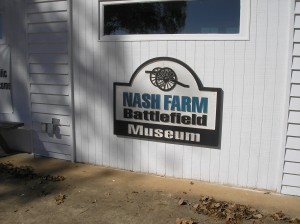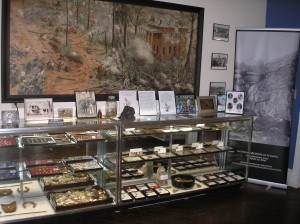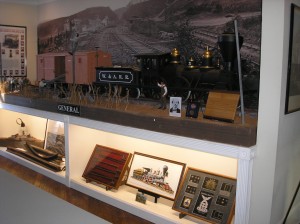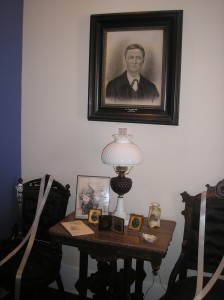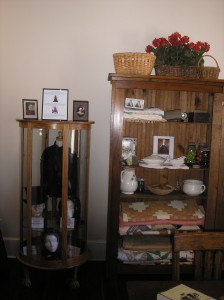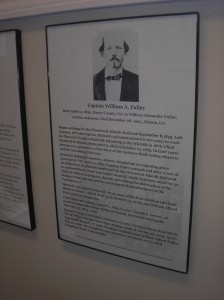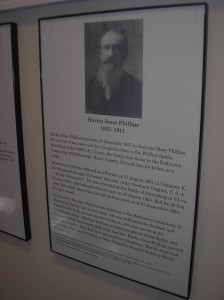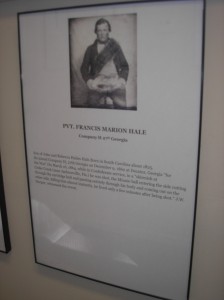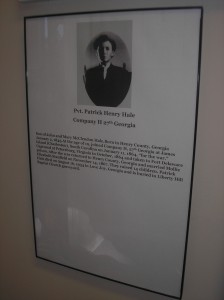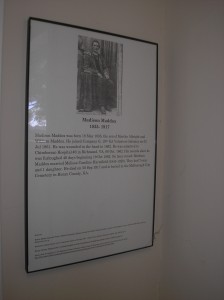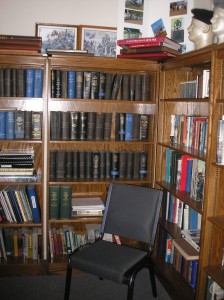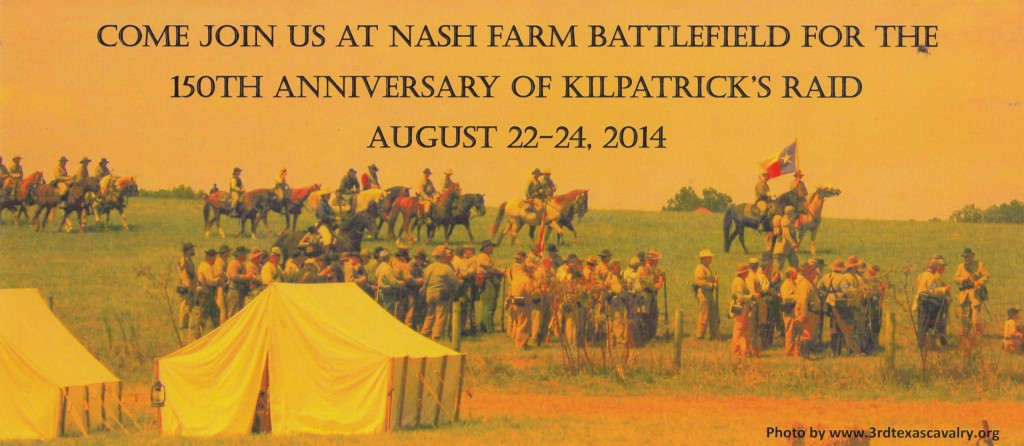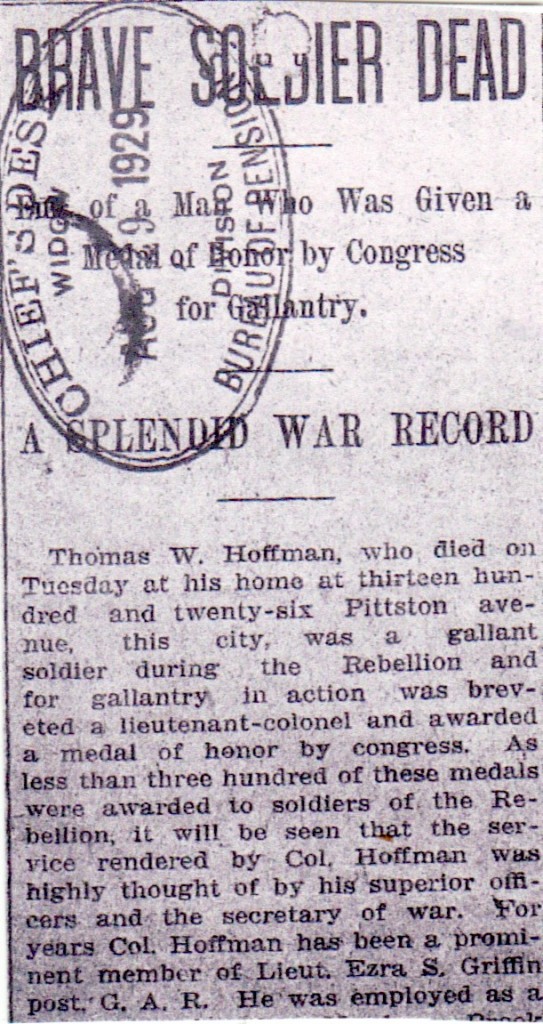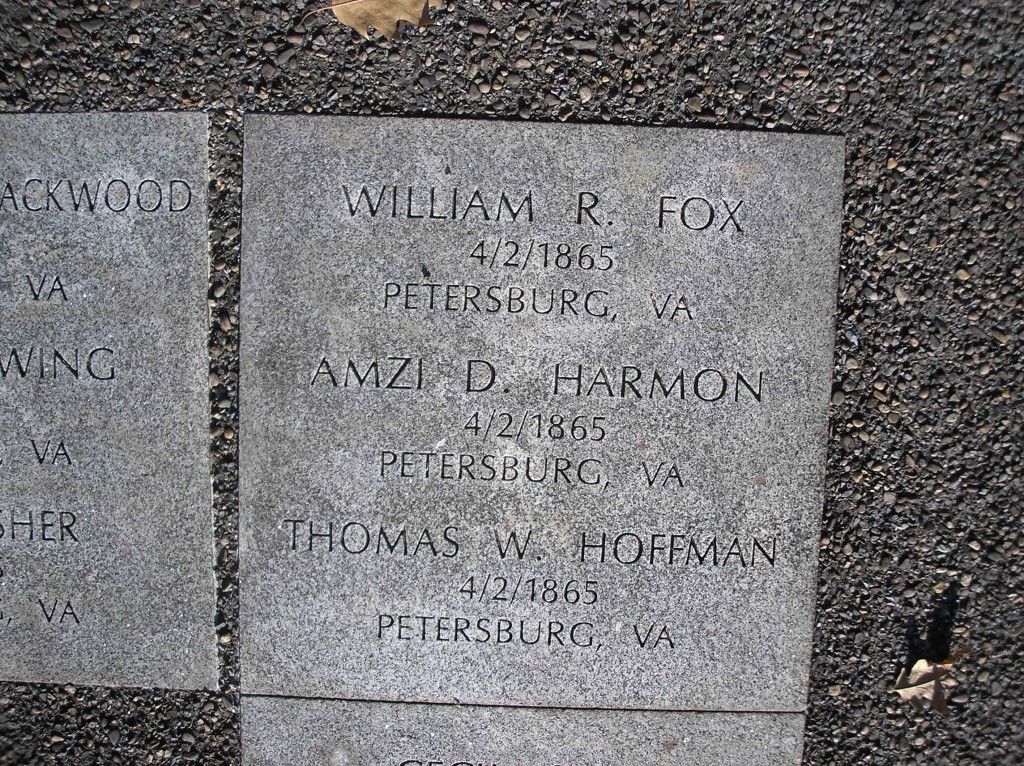Posted By Norman Gasbarro on August 13, 2014
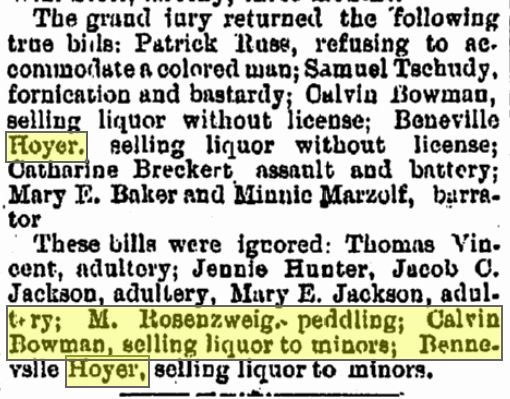
On 17 January 1891, it was reported in the Harrisburg Patriot that “the grand jury [Dauphin County, Pennsylvania] returned the following true bills…. Benneville Hoyer selling liquor without a license…. These bills were ignored…. Benneville Hoyer, selling liquor to minors.” What was not stated in the article was that Benneville Hoyer was a Civil War veteran and was an amputee.
Previously on this blog, the military record of Benneville Hoyer was discussed in a post entitled, Benneville Hoyer – Lost Leg at Battle of Antietam.
The following additional information was found about the liquor sales which led to his indictment:
An incident occurred during Gratz Fair Week of 1890 that gave Benneville Hoyer and friend Calvin Bowman a bit of publicity. The event was recorded in the Gratz column of the Millersburg Sentinel in January 1891 with a bit of irritation on the part of the reporter.
“Our town was thrown into a state of excitement last week. Our constable, Henry Keiser, after his return from Harrisburg Monday, subpenaed a number of witnesses to appear before the grand jury on Thursday. They gave them evidence, and it is reported that Calvin Bowman and Benneville Hoyer are indicted for selling liquor without a license at the time of the last fair. It is not saying too much to say that the matter was agitated on account of personal spite and pharisaic pretensions. It is not probable that much will result from proceedings. Bowman has left for parts unknown, while Hoyer is a one legged veteran whom no jury would be merciless enough to convict.”
At this time it is not known if Benneville was convicted of the charges. The issue of “personal spite” has also not been discovered.
The Henry Keiser referred to in the article was possibly the same Henry Keiser who was born in Gratz and who kept a diary of his Civil War military experiences in the 96th Pennsylvania Infantry. However, in 1891 he was living in Lykens Borough and it is not known if he had a second job as “Constable of Gratz.” There were several others persons of that name living in the vicinity, but none seem to have a connection with Gratz.
Calvin Bowman (1866-1925) was the son of Civil War veteran Cyrene T. Bowman (1843-1919), of the 50th Pennsylvania Infantry. Information from Cyrene’s biography states that he moved to Sacramento, Schuylkill County, in 1889 where he operated a hotel for a time. It is not known whether Calvin Bowman was convicted of the charge. It is also not known whether the case was ever brought to trial..
In the Commemorative Biographical Encyclopedia of Dauphin County, written by William Henry Egle and published in 1896, the following biographical sketch of Benneville Hoyer appeared of pages 911-912:
Benneville Hoyer, retired, Berrysburg, Pennsylvania, was born in Mahantango Township, Schuylkill County, Pennsylvania, 12 February 1844. His grandfather, Peter Hoyer, was a laborer; he died in Berks County, Pennsylvania.
Henry Hoyer, father of Benneville Hoyer, was born in Lykens Valley, Pennsylvania. He was a laborer and removed to Schuylkill county. He followed in his occupation until 1855, when he died. In the Lykens Valley he married Mary Boyer, born in Schuylkill county, daughter of Samuel Boyer, farmer, of the same county. They had five children: Elizabeth Hoyer, deceased, born in 1833, wife of William Engle; Rebecca Hoyer, unmarried, lives at Berry, Schuylkill county, Pa.; Henry Hoyer, deceased, soldier in the late war in Company A, Fiftieth Regiment, Pennsylvania Volunteers [50th Pennsylvania Infantry]; Peter Hoyer, died young. Mr. Henry Hoyer was a Democrat. He was a member of the Reformed Church. His wife died in Stone Valley, Northumberland County, Pa., in February, 1856.
Benneville Hoyer attended the public schools. At the age of eleven he lost his father and was obliged to work on a farm for his board and clothing until he was seventeen. He was then employed six months as a teamster by G. Adams, after which he spent a few months as apprentice in the smithy. At the age of eighteen Mr. Hoyer enlisted in Sacramento, Schuylkill County, Pennsylvania, 24 February 1862, in Company G, One Hundred and Seventh Regiment, Pennsylvania Volunteers [107th Pennsylvania Infantry], Col. Thomas. A. Ziegler, afterwards Col. T. F. McCoy and Capt. M. Murphy. He participated in the battles of Cedar Mountain, Bull Run, South Mountain, and Antietam. At the late named battle, 17 September 1862, he lost his leg by a minie ball passing through it. The leg was amputated in a barn, and he was confined in the Smoketown Maryland Hospital, was discharged 11 July 1863, and returned home. His father and mother being both dead he remained only a short time and then went to Philadelphia and learned cigar making at which he spent some time. He also worked a short time at label printing, and then went to the Soldiers’ Home, supported by the citizens of Philadelphia. Here he attended school in 1864-1865, and then returned to Schuylkill County and worked a short time at cigar making. After this he was for two years clerk for John Reed, of Gratz, Dauphin County. In 1869 Mr. Hoyer studied at Freeburn Academy, Snyder County, Pa., under Prof. D. Boyer, in 1871-1872 at Berrysburg Seminary, under Prof. Peter Bergstresser. He then taught school very successfully for two terms in Jackson Township and Jefferson townships. For the following six years he had a cigar manufactory and a restaurant at Gratz, which he sold, and in 1876 established the same business at Berrysburg; he conducted a cigar factory and a restaurant in that place for fifteen years. He at length sold out and now resides in Berrysburg, having relinquished active work.
Benneville Hoyer was married, in Jackson Township, Dauphin County, 3 November 1872, to Caroline Schoffstall, widow of Benjamin Kuntzelman, born in Gratz, Lykens Township, 15 January 1850; daughter of Solomon Schoffstall and Catherine [Bordner] Schoffstall; her father a farmer of Lykens Township. Their children are: Jennie D. Hoyer, born 25 February 1874, wife of C. H. Schoffstall; Charles H. Hoyer, born 9 October 1875, baker, Philadelphia; James M. Hoyer, born 18 August 1877, farmer in Mifflin Township; William E. Hoyer, born 23 August 23 1879, died 3- March 1881; Raymond F. Hoyer, born 12 February 1881, died 23 February 1889; Anna M. Hoyer, born 4 February 1886, attending Chester Springs School; Ella M. Hoyer, born 24 November 1887, also at same school; Beulah C. Hoyer, born 26 September 1801. Mrs. Hoyer died of heart failure 8 October 1892.
The children by Mrs. Hoyer’s first marriage to Mr. Kuntzelman are: Aaron I. Kuntzelman, born 27 April 1867, miner, at Williamstown; John B. Hoyer, born 7 October 1868, farmer in Upper Paxton Township.
Since the death of his wife, Mr. Hoyer has had a housekeeper Miss Emma J. Gessner, an excellent young lady. The first vote Mr. Hoyer cast, in November 1864, in Philadephia, was a Democratic ticket; he is now a Republican. He was a member of Kissinger Post, No. 176, G.A.R., Gratz, Pa., and of P.O.S. of A., Washington Camp, No. 307, Berrysburg, Pa. He is a member of the Reformed Church, Berrysburg, Pennsylvania.
Mr. Hoyer is among the maimed patriots, suffering much from the loss of his leg sacrificed in the service of his country, but secure in the reward bestowed by a consciousness of duty faithfully performed, and in the gratitude which all good citizens render to those who redeemed the life of the Nation. He has cheerfully accepted his limitations and patiently worked on. Declining years bring him no regrets, and the future is spanned with the bow of hope.
As a postscript to this story, two news items appeared in the Harrisburg Patriot in 14 October 1902 and 16 July 1903:

Benneville Hoyer, an old soldier, attended the National Encampment at Washington last week.
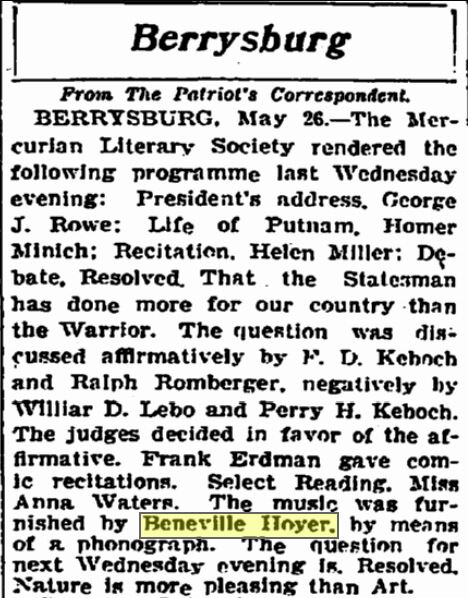
The Mercurian Literary Society rendered the following programme last Wednesday evening: President’s Address, George J. Rowe; Life of Putnam, Homer Minich; Recitation, Helen Miller; Debate, Resolved, That the Stateman has done more for our country than the Warrior. The question was discussed affirmatively by F. D. Keboch and Ralph Romberger, negatively by Williar D. Lebo and Perry H. Keboch. The judges decided in favor of the affirmative. Frank Erdman gave comic recitations. Select Reading, Miss Anna Waters. The music was furnished by Benneville Hoyer, by means of a phonograph. The question for next Wednesday evening is, resolved, Nature is more pleasing than Art.
————————————
News clippings are from the on-line resources of the Free Library of Philadelphia.
Category: Research, Resources, Stories |
2 Comments »
Tags: G.A.R., Gratz Borough, Jackson Township, Jefferson Township, Lykens Township, Mifflin Township, Millersburg, Upper Paxton Township, Williamstown
 ;
;
